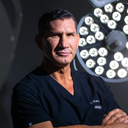Answers (106)
From board-certified doctors and trusted medical professionals
Dr. Anand D. Patel, MD

Dr. Anand D. Patel, MD
Board Certified Facial Plastic Surgeon
Answer
Dr. Catherine Winslow, MD

Dr. Catherine Winslow, MD
Board Certified Facial Plastic Surgeon
Answer
Dr. John Bitner, MD

Dr. John Bitner, MD
Board Certified Facial Plastic Surgeon
Answer
Dr. Eric M. Joseph, MD

Dr. Eric M. Joseph, MD
Board Certified Facial Plastic Surgeon
Answer
Dr. Jerome Edelstein, MD

Dr. Jerome Edelstein, MD
Certified Plastic Surgeon
Answer
Dr. Scott C. Sattler, MD, FACS

Dr. Scott C. Sattler, MD, FACS
Board Certified Plastic Surgeon
Answer
Dr. Richard J. Bruneteau, MD

Dr. Richard J. Bruneteau, MD
Board Certified Plastic Surgeon
Answer
Dr. Paul Vitenas, Jr., MD

Dr. Paul Vitenas, Jr., MD
Board Certified Plastic Surgeon
Answer
Dr. Philip J. Miller, MD, FACS

Dr. Philip J. Miller, MD, FACS
Board Certified Facial Plastic Surgeon
Answer
Dr. Sarmela Sunder, MD

Dr. Sarmela Sunder, MD
Board Certified Facial Plastic Surgeon
Answer
More Rhinoplasty Questions
See all Rhinoplasty Q&AWE SEND PRETTY
EMAILS
What’s trending? Who’s turning heads? Which TikTok myths need busting? We’ve got you. No fluff, no gatekeeping—just real talk. Get our free, unfiltered newsletter.
